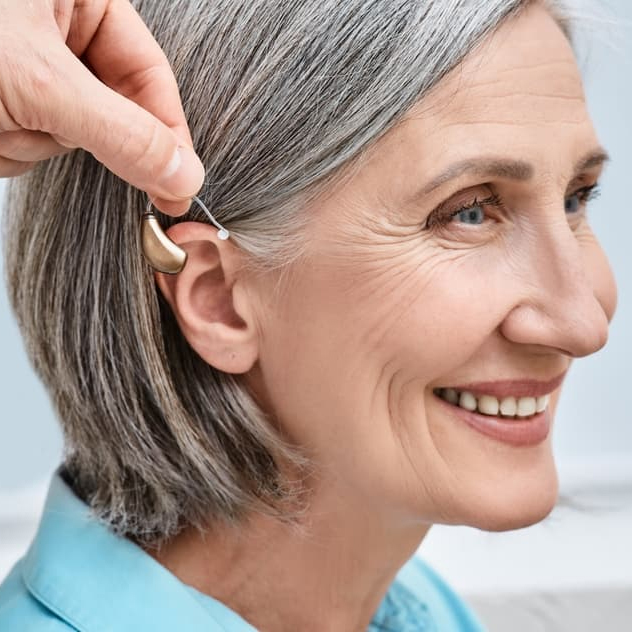When it comes to hearing loss, one of the most common solutions is the use of hearing aids. These small electronic devices are designed to amplify sounds and improve a person’s ability to hear. In this guide, we will cover everything you need to know about hearing aids so you can make an informed decision for your journey. Let’s get started.
What Are the Different Types of Hearing Aids?
When it comes to addressing hearing loss, there are several types of hearing aids available on the market. Each type has its own unique features and benefits that cater to different individuals with varying types of hearing loss.
Are All Hearing Aids the Same?
Despite common misconceptions, hearing aids are not all alike. There are several hearing aids, each tailored to different needs and preferences. By learning about these differences, you can make a well-informed choice when selecting the right hearing aid for yourself or a loved one.

Different Types of Hearing Aids
Let’s look into the different types of hearing aids that there are:
- Behind-the-Ear (BTE)
- In-the-Ear (ITE)
- Recieve-In-the-Ear (RITE)
- Custom Hearing Aids
Which Hearing Aid Is Best for Me?
Choosing the most appropriate hearing aid involves considering multiple factors, such as the severity of your hearing loss, lifestyle, and personal preferences. Consulting with a hearing healthcare professional is essential, they can evaluate your requirements and help you select the hearing aid that best fits your situation.
What Hearing Aid Accessories Should You Consider?
Alongside the hearing aid, various accessories can enhance your hearing experience. Common accessories include remote controls, Bluetooth connectivity devices, rechargeable batteries, and cleaning kits. These additions can boost the functionality and convenience of your hearing aid, helping you fully enjoy the advantages of improved hearing.
Benefits of Hearing Aids and How They Make Your Hearing Better
Hearing loss is a common condition that affects people of all ages and can sometimes be caused by being exposed to loud noise in your workplace or ear damage. The common symptoms of hearing loss include difficulty understanding speech, asking people to repeat themselves, Tinnitus, and turning up the volume on electronic devices. However, hearing aids can help you improve your hearing.
Hearing Loss Diagnosis and Treatment
Diagnosing hearing loss involves tests like an audiogram to determine its nature and extent. The audiologist may also inquire about your health history and noise exposure.
Treatment options vary based on the type and cause of hearing loss, including lifestyle changes and hearing aids. Your healthcare provider will tailor the best course of action for you. To maintain hearing, avoid loud environments and have regular check-ups.
Do Hearing Aids Make Your Hearing Better?
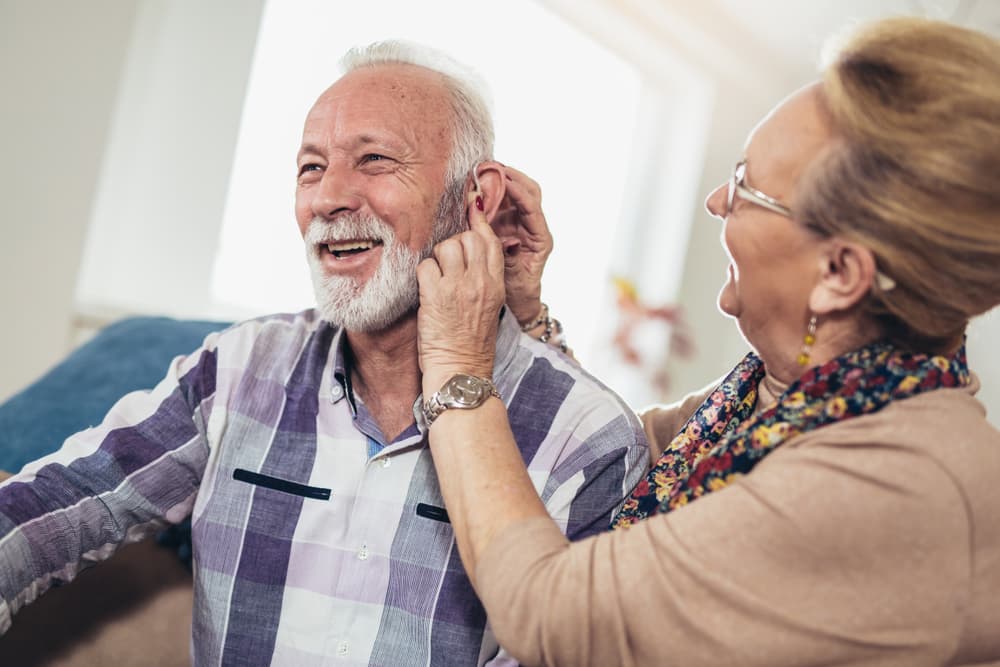
Before discussing the benefits of hearing aids, it’s crucial to confirm if they improve your hearing—which they do. Hearing aids are advanced devices engineered to amplify sounds and enhance your hearing ability. They capture sounds with a microphone, process them, and deliver amplified sound to your ear, notably improving clarity and accessibility. They enhance hearing even with different types of hearing loss.
Purpose of Hearing Aids
- Amplifying Sounds
- Improving Clarity
- Reducing Listening Effort
- Restoring Confidence
- Enhancing Safety
Benefits of Hearing Aids
- Improved Communication
- Enhanced Quality of Life
- Increased Independence
- Better Cognitive Function
- Improved Mental Health
- Increased Safety
How Do Hearing Aids Work?
Hearing aids are devices that are designed to help individuals with hearing loss. They work by amplifying and processing sound so that the person wearing them can listen more clearly. If you or someone you know is considering getting a hearing aid, it’s important to understand how it works and the available options.
Purpose of Hearing Aids
Hearing aids are vital for improving the quality of life for those with hearing loss. They make sounds clearer and more audible, enhancing communication effectiveness and safety by amplifying environmental sounds.
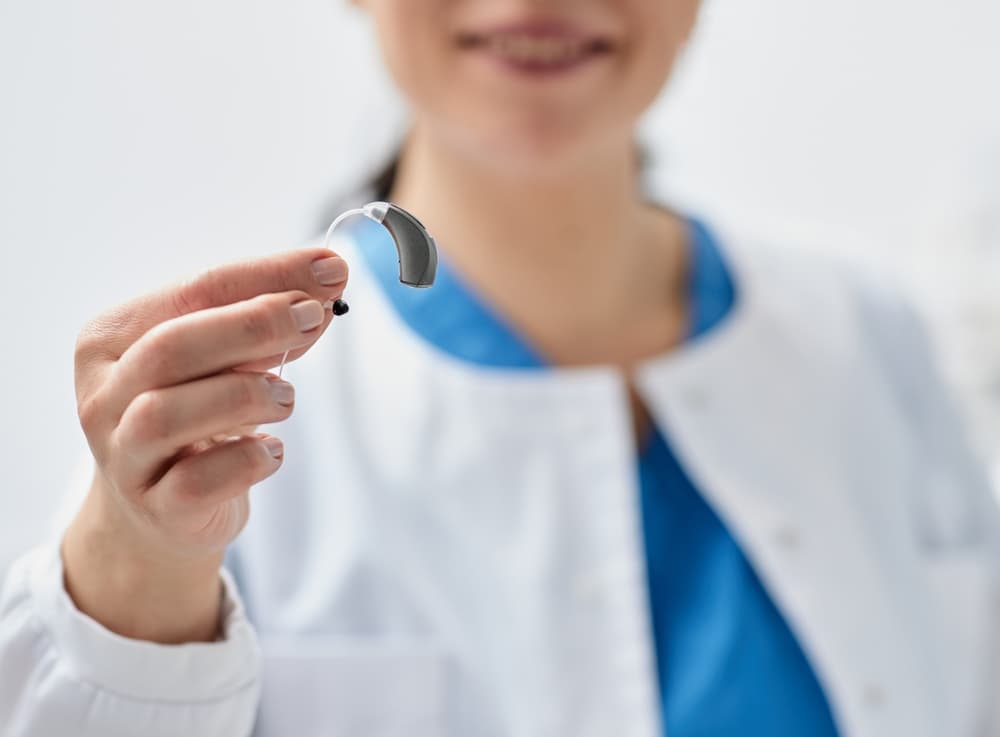
How Do Hearing Aids Work
Hearing aids consist of three main parts: a microphone, amplifier, and speaker. The microphone captures sound from the environment, with some models featuring directional capabilities for focusing on specific sounds. Next, the amplifier increases the volume to a comfortable level, which a hearing care professional can adjust.
Finally, the speaker delivers the amplified sound through a plastic tube in behind-the-ear models or directly into the ear canal in in-the-ear models. This stimulates the inner ear for improved hearing.
Types of Hearing Aids
- Behind-the-Ear (BTE): These hearing aids are the most popular, comprising a plastic case resting behind the ear and connected to an earmold or custom-made earpiece inside the ear canal.
- In-the-Ear (ITE): Smaller than BTE aids, these sit entirely inside the outer ear, custom-made to its shape for a discreet appearance.
- Canal aids: Even smaller than ITE aids, these fit either in the canal or fully inside the ear, providing cosmetic and listening advantages while being nearly invisible.
Do All Hearing Aids Work the Same Way?
There are two main types: Analog and Digital.
- Analog Aids: These convert sound waves into electrical signals, then amplify them. They’re custom-built and can be either adjustable or programmable.
- Digital Aids: These transform sound waves into numerical codes before amplifying them. They offer greater flexibility in adjusting to specific needs and environments.
Both analog and digital aids vary in cost and functionality, depending on individual needs and preferences.
Hearing Aid Features to Know About
Living with hearing loss can be difficult and affects daily communication, social interactions, and overall quality of life. However, thanks to technological advancements, we now have access to state-of-the-art hearing aids. These hearing devices offer a range of features designed to improve hearing clarity and enhance the listening experience.
Can Hearing Aids Tune Out Background Noise?
Background noise poses a considerable obstacle for those with hearing loss. Thankfully, contemporary hearing aids boast sophisticated capabilities to diminish background noise, enhancing speech clarity. By selecting the appropriate hearing aids, you can effectively manage your listening surroundings and experience improved communication.
Main Hearing Aid Features
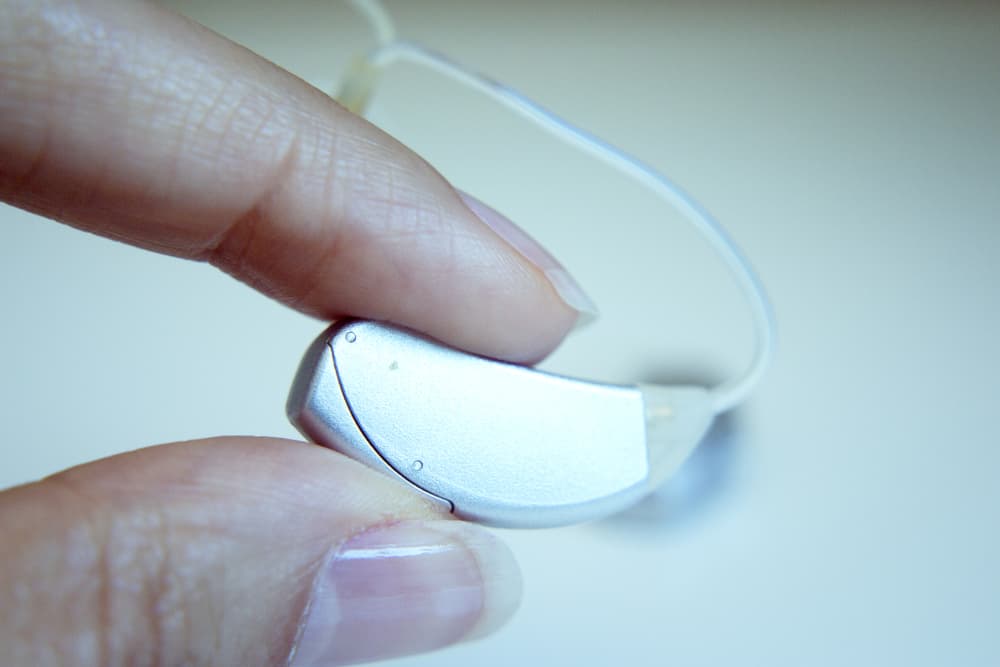
- Channels: Channels in hearing aids refer to the different frequency bands that can be adjusted independently.
- Directionality: Directionality is a feature that enables hearing aids to focus on sounds coming from a specific direction while reducing the volume of other surrounding noises.
- Noise Reduction System and Speech Enhancement: Hearing aids equipped with noise reduction and speech enhancement features work to minimize unwanted background noise while highlighting speech sounds.
- Feedback Suppression: Feedback is a whistling or buzzing sound that can occur when sound leaks from the ear canal back into the hearing aid’s microphone. Feedback suppression technology quickly identifies and eliminates feedback, providing a comfortable listening experience.
- Wind Suppression: Wind suppression technology is designed to reduce the impact of wind noise on hearing aid users.
How to Choose a Hearing Aid: Step-by-Step Guide
Hearing loss is a common concern for many individuals, and choosing the right hearing aid can significantly improve one’s quality of life. With numerous options available, selecting the most suitable hearing aid can be daunting.
Importance of Choosing the Right Hearing Aid
Hearing aids aren’t mere sound amplifiers; they’re tailored to suit an individual’s specific hearing requirements and lifestyle. Selecting the wrong one can lead to discomfort, dissatisfaction, and potential hearing damage. Conversely, a well-chosen hearing aid can enhance communication, self-assurance, and overall well-being.
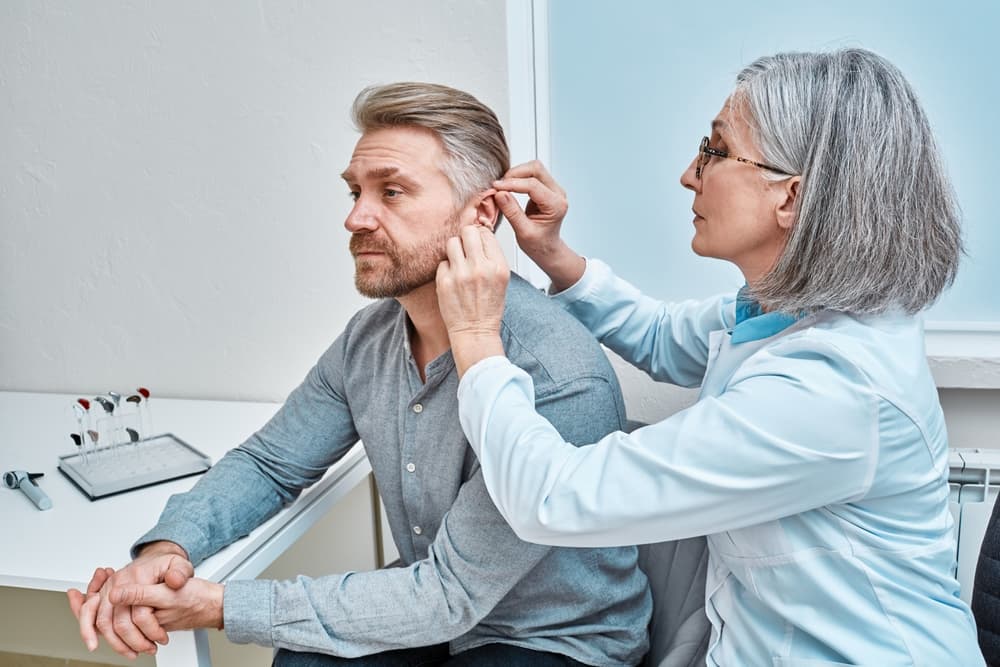
- Behind-the-ear (BTE) Hearing Aids: Housed in a small plastic case behind the ear, BTE aids are suitable for people of all ages with mild to profound hearing loss.
- Receiver-in-canal (RIC) Hearing Aids: Similar to BTE aids but smaller and more discreet, RIC aids produce less feedback due to the receiver’s distance from the microphone.
- In-the-ear (ITE) Hearing Aids: ITE aids, resembling earbuds, offer more space for components like directional microphones and Bluetooth technology. However, they aren’t ideal for severe hearing loss.
- Completely-in-canal (CIC) Hearing Aids: Nearly invisible, CIC aids fit entirely inside the ear canal, best suited for mild to moderate hearing loss and less prone to wind noise feedback.
How to Choose a Hearing Aid?
- Type and Degree of Hearing Loss: The first step in choosing a hearing aid is identifying the type and severity of your hearing loss. A comprehensive evaluation by an audiologist will provide this crucial information, helping narrow down suitable options.
- In-person vs. Remote Hearing Care: Decide between in-person and remote hearing care. In-person care involves face-to-face appointments with an audiologist for fitting and adjustments, while remote options use telehealth technology for virtual consultations and adjustments.
- Manual Dexterity and Lifestyle: When selecting a hearing aid, consider your lifestyle and manual dexterity. If you struggle with small objects or lead an active lifestyle, a larger hearing aid may be more suitable. Additionally, consider your usage of Bluetooth or telecoil technology.
- Rechargeable batteries: Rechargeable batteries are increasingly popular for their ease of use, especially for those with vision or dexterity issues. A device with rechargeable batteries and a larger size may be the best choice for these individuals.
All About OTC Hearing Aids
Around 30 million adults in the US have hearing loss, but only a fraction seek aid. This can lead to health issues like cognitive decline and depression, along with social and quality-of-life impacts. To address this, the FDA has introduced over-the-counter (OTC) hearing aids, aiming to enhance accessibility.
Can You Get Hearing Aids Over the Counter?
Today, in modern healthcare, you can buy over-the-counter (OTC) hearing aids without a prescription or professional supervision. These devices meet FDA safety and effectiveness standards. You can easily find them online or in stores, as long as they meet FDA requirements.
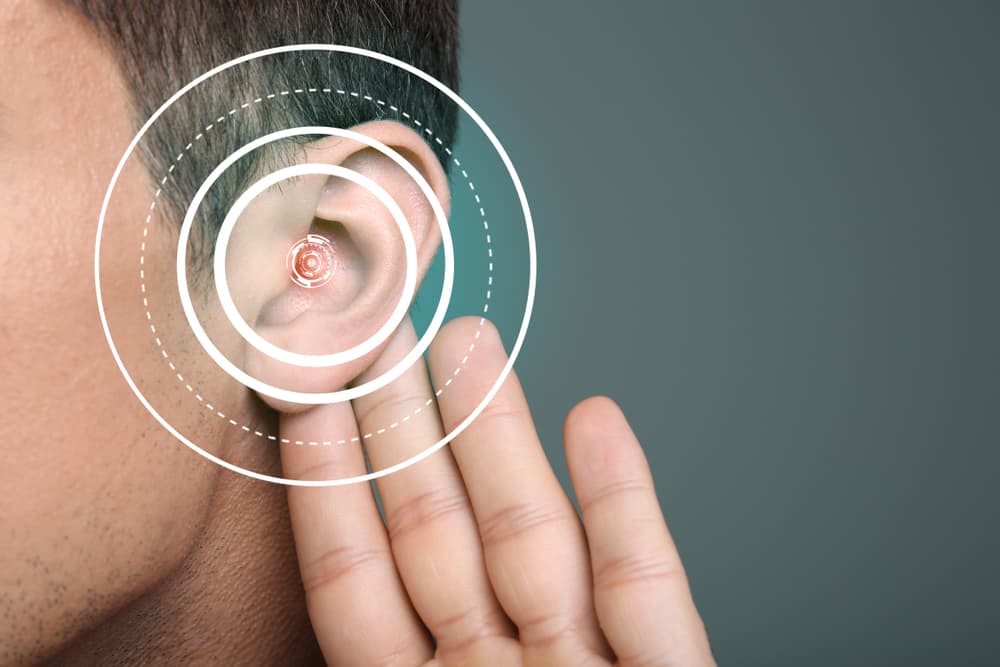
Are OTC Hearing Aids As Good As Prescription Hearing Aids?
The effectiveness of OTC hearing aids versus prescription ones varies based on the severity of the individual’s hearing loss. OTC aids are suitable for mild to moderate cases, amplifying sounds for easier conversation and enjoyment of environmental sounds. However, for severe or profound loss, prescription aids are often more powerful and customizable, offering higher amplification and clarity.
Who Can Buy OTC Hearing Aids?
Over-the-counter (OTC) hearing aids are for adults aged 18 and above with mild to moderate hearing loss. No consultation with an ear-nose-throat (ENT) doctor or hearing healthcare professional is needed for purchase.
However, for more severe hearing loss, consulting a licensed professional is advisable as OTC aids may not offer sufficient benefit due to output limitations.
Due to the need for specialized care, hearing aids require a prescription and consultation with an ENT doctor or audiologist for those under 18.
Additional Considerations About OTC Hearing Aids
Hearing aids can be bought without professional oversight or through a hearing healthcare professional like an audiologist or hearing aid provider. They can conduct a thorough hearing test and aid evaluation, and you can request your evaluation records for purchasing elsewhere.
Before buying, it’s vital to review the labeling on the OTC hearing aid packaging, as it contains necessary FDA-required information. If this isn’t available, contact the seller or manufacturer for details.
Does Medicare Cover Hearing Aids?
Hearing loss is a prevalent issue affecting millions of people, especially seniors. As we age, the likelihood of experiencing hearing difficulties increases, making access to hearing aids crucial for maintaining a high quality of life. However, a common question is whether Medicare covers the cost of hearing aids.
Can I Obtain Financial Assistance for a Hearing Aid?
Acquiring hearing aids can be costly, posing financial challenges for many. However, several financial assistance programs, including those offered by nonprofit organizations and state-based initiatives, aim to alleviate this burden.
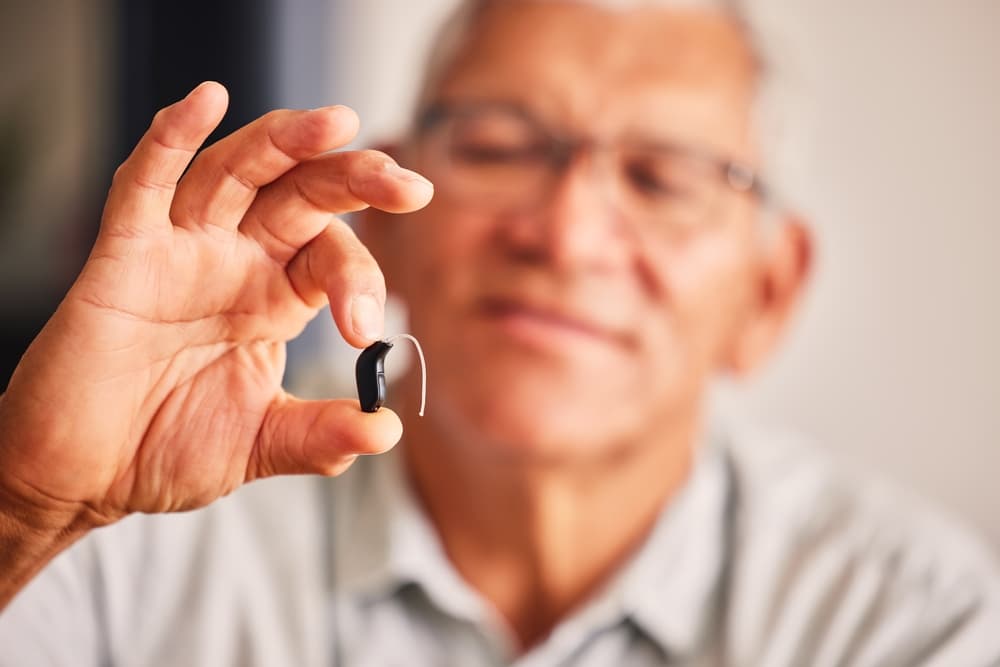
Does Medicare Cover Hearing Aids?
While crucial for seniors’ healthcare needs, Medicare typically doesn’t cover hearing aids or routine exams, leaving seniors facing financial challenges in obtaining them.
Tinnitus, often linked with hearing loss, can be relieved by hearing aids, which amplify external sounds and reduce internal noise perception. With Medicare’s limitations, seeking alternative funding for hearing aids becomes essential for those with tinnitus.
Seniors, disproportionately affected by hearing loss, face the dilemma of affordability. Supplemental insurance plans like Medigap may offer coverage for hearing aids, providing additional benefits beyond traditional Medicare.
How to Get Hearing Aid Coverage?
Given Medicare’s limited coverage, exploring alternative options for hearing aid assistance is crucial. Here’s a guide to help:
- Medicare Advantage Plans: Some Medicare Advantage plans offer extra coverage, including hearing aids. Research different plans to see if they include hearing aid services.
- State-Based Programs: Some states have programs that provide financial aid for hearing aids. Investigate these initiatives in your state for potential assistance.
- Nonprofit Organizations: Nonprofits often offer support for individuals with hearing loss. Explore these organizations for financial aid or resources to obtain affordable hearing aids.
Hearing Aid Fitting Guide: Sizing Your Hearing Aids
A well-fitted hearing aid can significantly affect your ability to communicate effectively and engage fully in the world around you.
How Do You Get Fitter for Hearing Aids?
Begin the hearing aid fitting process by scheduling an appointment with an audiologist. In the initial meeting, they’ll assess your hearing needs and preferences, conducting a thorough examination and discussing your medical history and challenges in various listening environments. This collaborative approach ensures a personalized fitting experience tailored to your unique requirements.
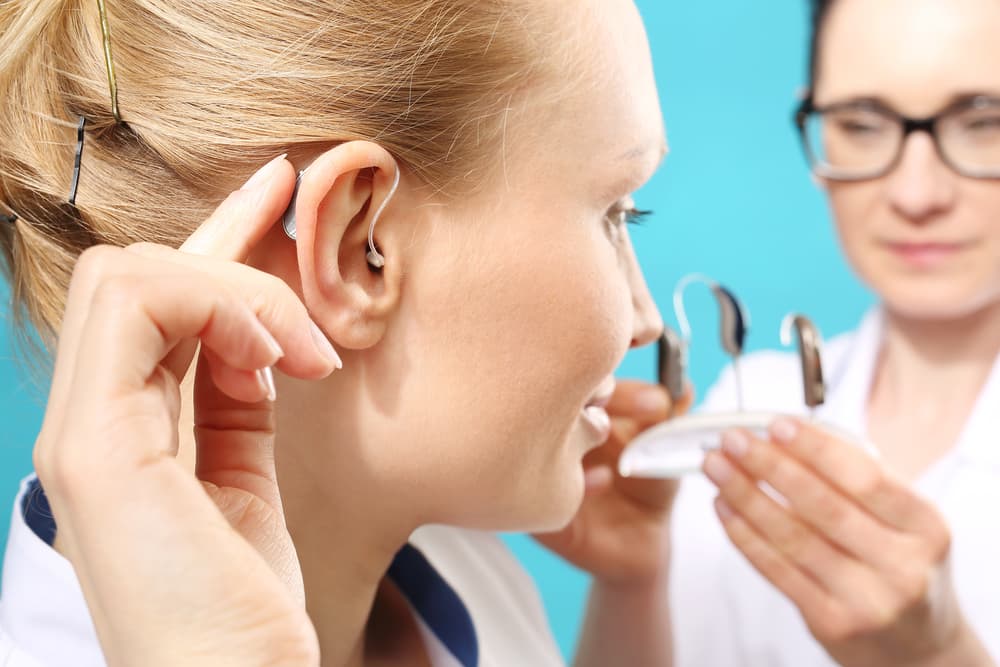
What Does A Hearing Aid Fitting Involve?
- Comprehensive Hearing Assessment: The audiologist evaluates your hearing to identify specific frequencies you struggle with, guiding the customization of your hearing aids.
- Discussion of Lifestyle and Preferences: Understanding your daily activities helps tailor the hearing aids to your needs, ensuring they’re optimized for your lifestyle.
- Impressions of Ear Canal: Precise molds are taken for a snug fit, maximizing comfort and effectiveness.
- Programming and Calibration: The audiologist customizes settings based on your test results and preferences, optimizing speech clarity and sound quality.
- Instruction and Training: Learn to insert, remove, and care for your hearing aids, as well as adjust settings for different environments, ensuring you can manage them independently.
Hearing Aid Sizes
- Behind-the-Ear (BTE): Comfortably rests behind the ear, suitable for various hearing losses, often with extra features and larger batteries for extended usage.
- In-the-Ear (ITE): Fits entirely within the outer ear for discretion and customized comfort.
- In-the-Canal (ITC): Partially in the ear canal, balancing visibility and cosmetic appeal while accommodating different hearing losses.
- Completely-in-the-Canal (CIC): Virtually invisible, fitting entirely inside the ear canal for aesthetics without compromising functionality.
- Receiver-in-the-Canal (RIC): A small device behind the ear with a speaker inside the ear canal, offering natural sound and a comfortable fit known for clarity.
What to Expect from a Hearing Aid Fitting
- Fine-Tuning: The audiologist adjusts settings based on your feedback for optimal hearing in different environments.
- Realistic Expectations: Recognize that adapting to hearing aids takes time, with guidance from your audiologist.
- Follow-Up Appointments: Regular check-ins are crucial for addressing concerns, adjusting, and maintaining satisfaction.
Additional Elements to Consider
- Technological Features: Explore Bluetooth connectivity, rechargeable batteries, and noise reduction for improved daily living.
- Cost and Insurance: Understand the total cost, warranty, and potential insurance coverage for your selected hearing aids.
- Maintenance and Cleaning: Discover effective cleaning methods and maintenance routines to extend the lifespan of your hearing aids.
- Trial Period: Many providers offer trial periods to allow you to test the hearing aids in your daily life before making a decision.
How to Put in Hearing Aids? Step-by-Step Guide
Hearing aids can significantly enhance the quality of life for individuals experiencing hearing loss. However, their effectiveness largely depends on how well they are placed and maintained. Properly inserting and removing hearing aids is crucial for comfort, functionality, and longevity.

How to Put In Hearing Aids?
- Prepare Your Hearing Aids: Ensure they are clean, dry, and have enough battery power.
- Choose the Correct Ear: Identify the right (R) and left (L) hearing aids.
- Position the Hearing Aid: Hold it correctly, with the microphone facing forward.
- Insertion: Pull your earlobe down, then gently insert the hearing aid into your ear canal without forcing it.
- Secure Placement: Ensure the hearing aid fits snugly and sits flush with your ear.
- Perform a Check: Verify both hearing aids are working and adjust the volume if needed.
Tips for Placing and Removing Hearing Aids
- Use a Mirror: If you’re having trouble, use a mirror to guide you for proper placement.
- Be Gentle: Handle your hearing aids with care to avoid discomfort or damage.
- Practice Patience: It may take time to get used to inserting and removing your hearing aids. Practice regularly.
- Keep Them Clean: Clean your hearing aids regularly to prevent wax buildup, following the manufacturer’s instructions.
- Seek Assistance if Needed: If you’re struggling, seek help from a healthcare professional or audiologist.
What Are the Main Types of Hearing Aid Accessories?
Hearing aids are incredible devices that help individuals with hearing loss reconnect with the world around them. However, to maximize the effectiveness and comfort of these devices, many users rely on hearing aid accessories. These accessories not only enhance the performance of hearing aids but also cater to various needs and lifestyles.
Types of Hearing Aids Accessories
- Batteries: Essential for powering hearing aids, these batteries are available in sizes 10 to 675. Choose the right size as recommended by your audiologist. Keep extra batteries in your carrying case for emergencies.
- Battery Chargers: Indispensable for rechargeable hearing aids, providing a convenient and eco-friendly alternative to disposable batteries. Use overnight or portable chargers for on-the-go charging.
- Cleaning Kits: Include brushes, picks, and wipes to remove wax, debris, and moisture. Regular cleaning extends device lifespan, prevents infections, and ensures clear sound.
- Domes and Tips: Silicone or foam attachments that fit on the end of the hearing aid tubing or receiver. Available in various sizes for comfort and secure fit, improving sound quality and preventing feedback.
- Dehumidifiers: Remove excess moisture to prevent damage and maintain performance. Some models use UV-C light for sanitization, keeping devices hygienic and bacteria-free.
- Remote Controls: Allow discreet and convenient adjustments of settings and volume, beneficial for those with dexterity issues.
- Bluetooth Streamers: Enable wireless connection to audio devices, enhancing the listening experience by streaming phone calls, music, and audio directly to hearing aids.
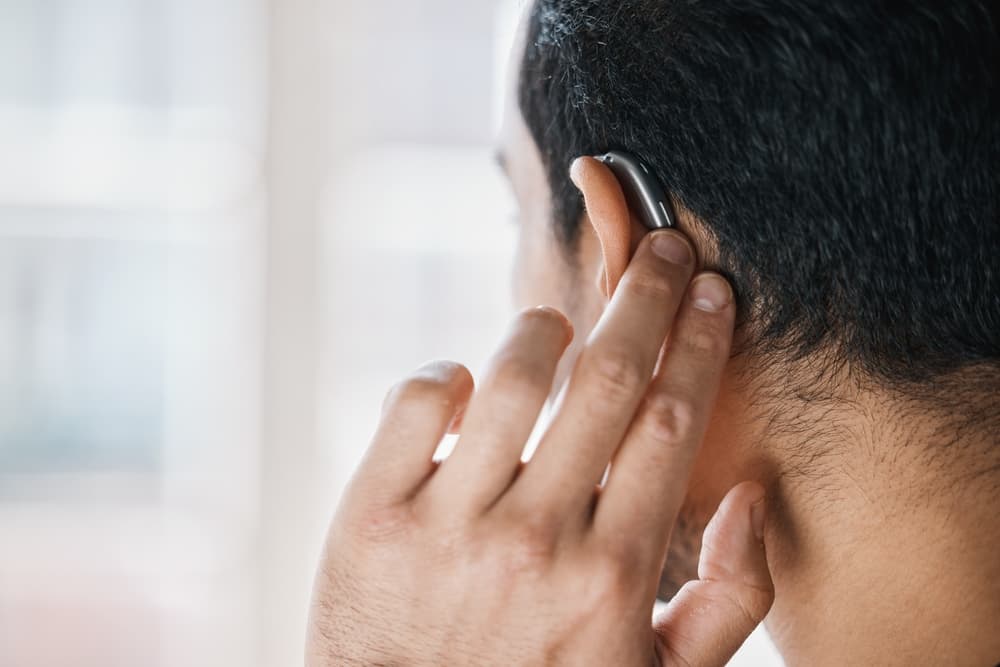
Hearing Aid Tips: How to Adapt Them to Your Life
Adjusting to hearing aids can be a significant transition for anyone experiencing hearing loss. Whether you’re new to wearing hearing aids or looking to optimize your experience, understanding how to adapt them to your life is crucial.
How Long Does It Take to Adjust to Your Hearing Aids?
The adjustment period for wearing hearing aids for the first time varies from person to person. Some individuals may adapt quickly within a few days, while others may require several weeks or even months. Factors such as the severity of hearing loss, the type of hearing aids, and personal comfort levels all play a role in the adjustment process. It’s essential to be patient with yourself and allow time for getting used to hearing aids.
Follow These Hearing Aid Tips
- Gradual Introduction: Start by wearing hearing aids for short periods in quiet settings, gradually increasing duration and exposure to challenging environments.
- Proper Fit: Ensure a comfortable, secure fit to avoid discomfort. Regular adjustments may be needed, especially initially.
- Practice Listening: Engage in active listening activities, like conversations, watching TV, or listening to music, to help your brain adjust.
- Maintain Cleanliness: Keep hearing aids clean and dry. Follow cleaning instructions and schedule regular professional check-ups.
- Use Assistive Devices: Consider using accessories like captioned telephones to enhance hearing in specific situations.
- Manage Expectations: Realize hearing aids won’t restore perfect hearing but will improve communication. Set realistic expectations and celebrate progress.
What to Avoid When Wearing a Hearing Aid
- Avoid Moisture: Keep hearing aids dry by removing them before swimming, showering, or activities causing heavy perspiration.
- Protect from Impact: Handle with care, avoid dropping, and use a protective case when not in use.
- Limit Exposure to Loud Noise: Avoid prolonged exposure to loud environments and use ear protection when necessary.
- Regular Maintenance: Clean hearing aids regularly and schedule professional servicing to ensure optimal performance.
Hearing Aid Care: Essential Tips for Maintenance
Hearing aids are invaluable devices that significantly improve the quality of life for millions of people with hearing loss. Proper maintenance is essential to ensure they continue to function optimally and provide the support needed.
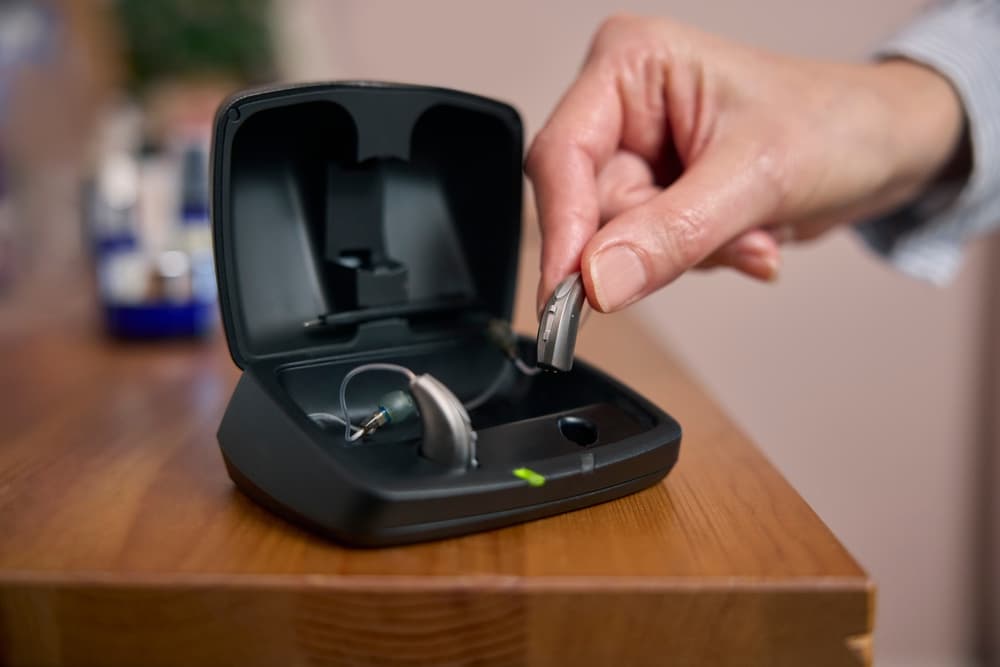
Importance of Taking Care of Your Hearing Aids:
Hearing aids are intricate technology designed to amplify sound and enhance hearing. However, they are also exposed to various environmental factors such as moisture, earwax, and dust, which can impact their performance if not managed properly. Regular maintenance not only prolongs the lifespan of your hearing aids but also ensures they deliver consistent and reliable results.
Hearing Aid Maintenance Tips to Follow
- Handle with Care: Use clean hands and a soft cloth to handle and wipe down your hearing aids, avoiding drops on hard surfaces.
- Keep Them Dry: Moisture can damage hearing aids. Use a dehumidifier or drying kit overnight, especially in humid climates.
- Avoid Extreme Temperatures: Protect your hearing aids from extreme heat or cold by keeping them away from direct sunlight and heat sources.
- Replace Batteries Regularly: Ensure batteries are fresh and keep a spare set to avoid disruptions.
- Schedule Professional Check-ups: Regular audiologist visits for maintenance and adjustments ensure optimal performance and early issue detection.
How to Clean a Hearing Aid
- Gather Supplies: You need a soft, dry cloth, a hearing aid brush, and a wax pick or loop.
- Remove Earwax: Gently use the wax pick or loop to clear earwax from the microphone and receiver ports without pushing it further in.
- Wipe Down: Use a soft cloth to clean the entire hearing aid, focusing on crevices and openings.
- Clean Tubing: If applicable, gently brush the tubing to remove buildup.
- Check for Damage: Inspect for cracks or loose parts and contact your audiologist if you find any issues.
Start Your Journey with Us
Take the first step towards better hearing today with Great Hearing Benefits and prioritize the care of your hearing aids for years of reliable performance. Our hearing aid benefits program offers comprehensive coverage for all stages of your hearing health journey, from initial evaluation to ongoing care and maintenance. Contact us!

